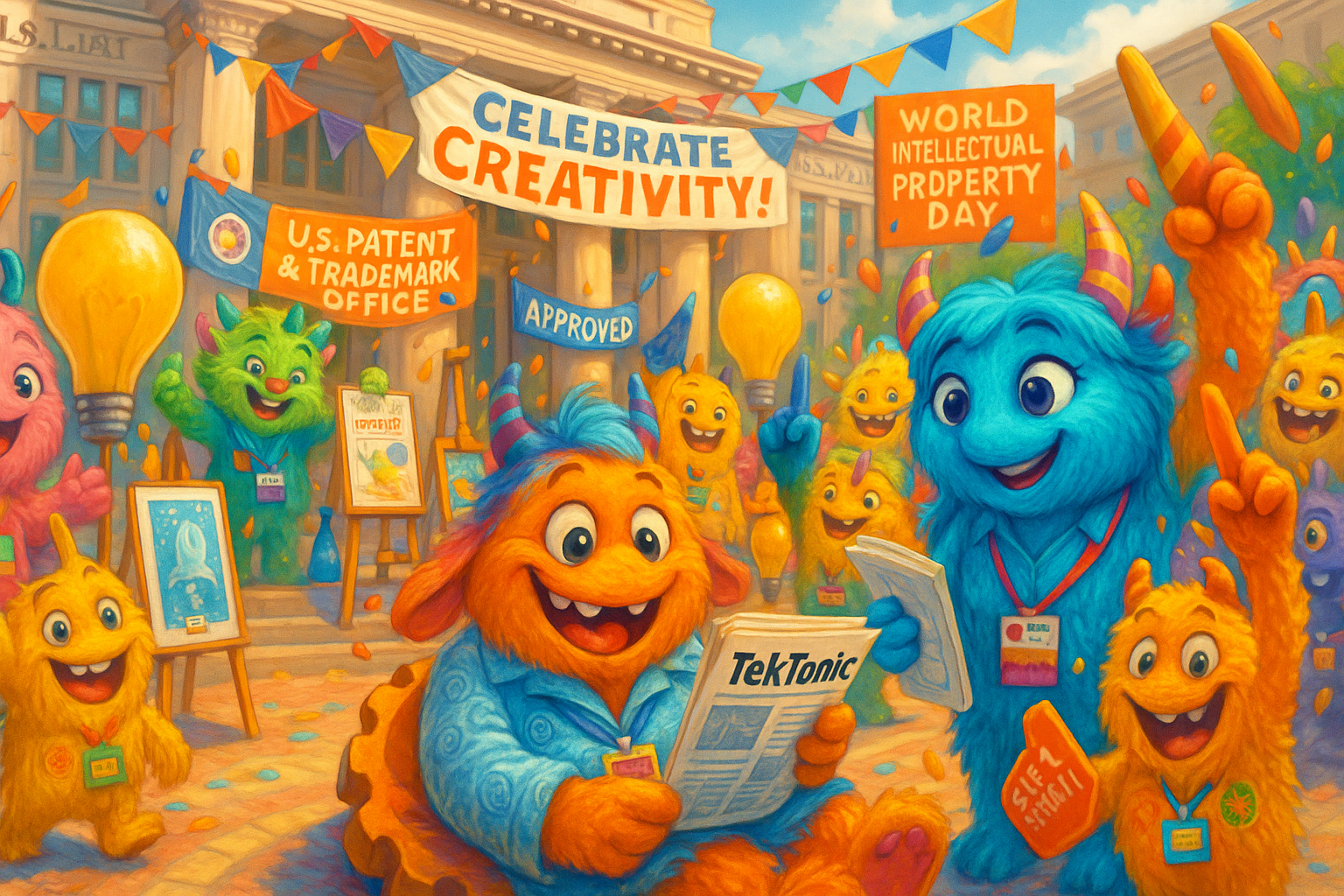Welcome back! Starting with this newsletter, you’ll see a new layout with quick-scan highlights instead of dense blocks of text. Each edition still seeks to curate the week’s top AI stories, with its broader goal than simply tracking new models, instead focusing on how AI breakthroughs impact business, policy, and everyday life. I hope the streamlined format makes it easier to follow AI’s technical breakthroughs and social impact at a glance.
This week, acceleration (as always) and integration of AI into work and society were the dominant themes. Microsoft’s six-month study detailed how generative AI is already altering knowledge workers’ habits, notably reducing email time but not yet impacting meetings, highlighted in its “Shifting Work Patterns with Generative AI” paper, how individual behaviors adapt faster than corporate ones. DeepMind’s “Welcome to the Era of Experience” paper outlined a possible future where AI learns primarily from interaction, potentially surpassing human capabilities. However, this progress isn’t without hurdles, as evidenced by findings that OpenAI’s newest models, while excelling in programming and math, are exhibiting higher hallucination rates. Oh, and for those keeping score, Google retained the top position in most benchmarks and leaderboard following a week of user testing. In my testing, O3 enables more “humanlike” reasoning and output, but it cannot handle large code files, and its hallucination is far worse than Google’s Gemini 2.5 Pro. Gemini is currently the leader.
Top Stories
- Biggest Story – Google DeepMind outlines a new AI paradigm where agents learn primarily from interaction and experience, potentially dwarfing human data and enabling superhuman capabilities beyond human understanding. (link)
- Most Significant Tech Advancement – Google DeepMind’s Genie 2 model generates diverse, interactive 3D environments from single images, creating endless controllable worlds for training AI agents and potentially robots more effectively. (link)
- Biggest Revelation – OpenAI’s latest o3 and o4-mini models show increased hallucination rates (up 33% and up 48% respectively on PersonQA), reversing the trend of improved factual accuracy with newer generations. (link)
- Biggest Model – Microsoft introduces BitNet b1.58, an efficient AI model using a 1.58-bit representation for weights that reportedly outperforms larger rivals on some benchmarks while running on standard CPUs. (link)
- Biggest Policy Move – The Trump administration issues an executive order establishing a task force and leveraging grants to promote AI education in K-12 schools and workforce development programs. (link)
- Curveball of the Week – The world’s first robot boxing match is scheduled in China, featuring Unitree’s child-sized G1 humanoid bot competing for the ‘Iron Fist King’ title against another robot. (link)
- Editor’s Pick – A 6-month Microsoft field experiment found GenAI access led knowledge workers to spend 25% less time on email, but didn’t significantly change meeting time, impacting independent tasks more. (link)
- Tech Advancements – AI helps identify 303 previously unknown Nazca Lines geoglyphs in Peru by processing aerial imagery, reshaping archaeological discovery and analysis methods. (link)
- Business – 54% of tech hiring managers anticipate layoffs within the next year, with 45% citing AI/automation replacing roles as a key factor, a General Assembly report finds. (link)
- Media – Character.AI is developing AvatarFX, a tool using AI to animate still photos, allowing them to speak with generated voices, raising both creative possibilities and deepfake concerns. (link)
- Coding – The complexity and data demands of AI are driving a fundamental re-engineering of chip design, packaging, and EDA tools, breaking down traditional silos. (link)
- Cybersecurity – Sensitive corporate data, including source code and HR records, is increasingly flowing into AI tools, raising significant data security challenges for organizations, a Cyberhaven report finds. (link)
- Hardware – Intel launches its second-gen AI-enhanced SDV system-on-chip, featuring a multi-node chiplet architecture for software-defined vehicles, alongside new automotive partnerships. (link)
- Tools – OpenAI makes its advanced GPT-Image-1 model available via API, enabling developers to integrate high-quality, versatile image generation into applications like Adobe and Canva. (link)
- Healthcare – The FDA grants De Novo authorization for Epiminder’s Minder®, the first implantable continuous EEG monitor in the US for long-term epilepsy tracking. (link)
- Startup – Jeff Bezos is reportedly backing Slate Auto, an EV startup aiming to challenge Tesla with affordable, modular electric vehicles designed for simplicity and adaptability. (link)
- Crypto – Anthropic’s AI research identifies potential ‘jailbreaks’ in AI systems, detecting unintended values like ‘dominance’, raising security concerns applicable to areas like crypto trading bots. (link)
Themed Link Stacks
AI Shaping Work & Business
- Shifting Work Patterns with Generative AI (link) – Email time cut
- 54% of Tech Hiring Managers Say Layoffs Likely (link) – AI replacing roles
- Google says AI can help boost productivity (link) – 122 hours yearly
- AI can help banks unleash software engineering productivity (link) – Significant cost savings
- 62% of US Job Seekers Wary of AI Hiring (link) – Prefer human review
- Rise of AI Could Signal Decline of Salaried Jobs (link) – Automation impact foreseen
The AI Development Race
- Welcome to the Era of Experience (link) – Learning beyond data
- OpenAI’s newest o3 and o4-mini models (link) – Increased hallucinations are noted
- Microsoft’s new AI: a “Bitnet” (link) – Runs on CPUs
- Google DeepMind Unveils Genie 2 (link) – 3D world generation
- OpenAI Launches Powerful New Image Model (link) – GPT-Image-1 API
- Open source AI is the new Linux (link) – Faster evolution cited
Security, Ethics & Society
- Sensitive corporate data increasingly flowing into AI tools (link) – Source code exposed
- Values in the wild: Discovering values in LM interactions (link) – Real-world value analysis
- ‘Vibe coding’ using LLMs susceptible to security flaws (link) – CWE top 10
- AI-powered scams rise: Microsoft reveals $4B thwarted fraud (link) – Scams getting sophisticated
- Anthropic launches AI welfare research program (link) – Consciousness, preferences studied
- Instagram’s AI Age Check (link) – Detects teen accounts
AI’s Expanding Applications
- AI Solves One of Archaeology’s Greatest Puzzles (link) – Finds Nazca Lines
- Intel Launches AI-Powered Chipset For Vehicles (link) – SDV SoC debuts
- AI predicts pediatric cancer recurrence accurately (link) – Brain imaging analysis (*Note: Article content not fully accessible*)
- AI and physicians offer distinct strengths in virtual care (link) – Study compares diagnoses
- Character.AI gives still photos ability to speak (link) – AvatarFX technology
- Novel AI Approach for User-Defined Fragrance Creation (link) – Scents from data
Deep Dive
Microsoft’s six-month field experiment involving 6,000 knowledge workers provides some of the first large-scale, long-term evidence on how generative AI impacts real-world work patterns. The study randomly assigned access to Microsoft 365 Copilot, an integrated AI tool, and tracked usage across emails, documents, and meetings. The key finding reveals a divergence in adoption: workers who used the tool significantly reduced their weekly email time by about 3 hours (25%), suggesting AI aids individual productivity tasks like drafting or summarizing. They also appeared to complete documents moderately faster. However, time spent in meetings remained largely unchanged. This matters because it indicates that while GenAI adoption can quickly alter individual work habits, changing collaborative behaviors like meeting frequency or duration requires broader coordination and potentially organizational shifts, which take longer to implement. The study highlights that early impacts of workplace AI are more pronounced in tasks workers can change independently, offering crucial insights for businesses planning AI integration and managing expectations about immediate versus long-term productivity gains and workflow transformations.
That is it. Stay tuned for more news next week. I APPRECIATE ALL THE READERS. Help spread the word. I put these newsletters together so productive humans like you can stay on top of the latest AI stories shaping our world.
If you like these weekly tech news reports, subscribe to get notified of new editions and updates. For daily updates, check out our news page. For a more in-depth analysis of the week’s news, sign up for our free weekly newsletter to the right of the daily news, or follow me on Twitter or YouTube.
Footer
Social
- There’s no need to overshare on social media now that OpenAI’s new chatbots can pinpoint your location from the tiniest…
- Welcome to the Era of Experience
- Google DeepMind on what’s next for Gemini, AGI, self-awareness
- Open source AI is the new Linux, only faster
- Zuckerberg’s Emails Reveal Preference for Influencers on Instagram and X Over Facebook – TechStory
- Shifting Work Patterns with Generative AICorresponding author: eldillon@microsoft.com.
- After Declaring the End of Smartphones, Mark Zuckerberg is Now Racing to Replace Them
- OpenAI’s newest o3 and o4-mini models excel at coding and math – but hallucinate more often
- Google quadruples Gemini userbase in just 5 months
- Values in the wild: Discovering and analyzing values in real-world language model interactions \ Anthropic
- OpenAI is interested in acquiring the Chrome browser if Google is forced to sell it
- OpenAI expands o3 with higher limits and task scheduling
- Anthropic says virtual AI workers will be here within a year
- Cursor AI faces backlash as support bot fabricates policy, refuses coding assistance
- Microsoft says AI agents will make every employee an “agent boss” — after Bill Gates claimed AI will replace humans in most jobs
- Anthropic launches AI welfare research program – SiliconANGLE
- Dubai crowns champions in prompt engineering
- Google says AI can help boost productivity by 122 hours per year
Tech Advancements
- Artificial Intelligence Solves One of Archaeology’s Greatest Puzzles
- Google DeepMind Unveils Genie 2: Advanced AI for World-Building
Business
- 54% of Tech Hiring Managers Say Layoffs Likely This Year, General Assembly Report Finds
- Rise of AI Could Signals Decline of Salaried Jobs – Weekly Voice
- AI boom under threat from tariffs, global economic turmoil
- AI is changing how software companies charge customers. Welcome to the pay-as-you-go future.
- 62% of US Job Seekers Would Consider Not Applying to Companies Using Generative AI during the Hiring Process
- 6 in 10 hiring managers open to social media applicants: survey
- AI can help banks unleash a new era of software engineering productivity
- Intel to cut over 20,000 employees, says report — and middle managers are on the chopping block
- Mark Zuckerberg’s Meta Lays Off Unspecified Number Of Employees At Its Reality Labs Division: Report – Meta Platforms (NASDAQ:META)
- The Rise of Autonomous Finance: How 9M is turning AI into a fully operational investment system
- AI at Play: 74% of Indian Companies Plan to Hire Freshers in 2025
Media
- The Academy Awards have new film rules. AI is now okay for the Oscars
- AI Influencers: Your Next Brand Ambassador Might Not Be Human
- Novel AI Approach for User-Defined Fragrance Creation
- Instagram’s AI Age Check Could Change How Teens Use the App
- Perplexity reveals the real reason it’s building a browser—ads
- World’s first robot boxing match to be held in China
- AI is making the stuff of fantasy novels real as Character.AI gives still photos the ability to speak
Coding
- More than 100 software companies are getting ‘squeezed’ by AI: study
- Sundar Pichai Reveals Shocking Truth: 30% of Google’s Code Written by AI! – LKO Uniexam.in
- AI Drives Re-Engineering Of Nearly Everything In Chips
Cybersecurity
- Hackers flood internet with malicious websites: researchers detect over 1,000 per day
- Sensitive corporate data increasingly flowing into AI tools
- New Report Reveals AI Trust Divide in Cybersecurity
- A strategic framework for leaders to secure generative AI
- Alarming rise in AI-powered scams: Microsoft reveals $4 Billion in thwarted fraud
- ‘Vibe coding’ using LLMs susceptible to most common security flaws
Hardware
- Intel Launches AI-Powered Chipset For Software-Defined Vehicles, Announces New Automotive Partnerships
- AI Drives Re-Engineering Of Nearly Everything In Chips
Tools
- Microsoft’s new AI: a “Bitnet” that runs on CPUs & outperforms rivals, revolutionizing efficiency. – 59 Hardware
- Microsoft 365 Copilot Wave 2 is here: Take a look at what’s new
- Elon Musk’s xAI Unveils Grok AI with Vision and Multilingual Superpowers
- OpenAI Launches Powerful New Image Model for Developers
- Perplexity teases a web browser called Comet
- Nvidia announces general availability of NeMo tools for building AI agents
Education
- New Research Finds Schools of Education Fail to Prepare Teachers to Use AI
- Trump unveils sweeping order to bring AI into US education
Healthcare
- What AI accreditation might look like in healthcare | Modern Healthca…
- Incorporation of explainable artificial intelligence in ensemble machine learning-driven pancreatic cancer diagnosis – Scientific Reports
- AI and physicians offer distinct strengths in virtual urgent care treatment
- Altais Introduces Abridge AI to Reduce Physician Burnout and Enhance Clinical Documentation
- FDA Approves Minder®, the First Implantable Continuous EEG Monitor in the US
- AI predicts pediatric cancer recurrence with impressive accuracy
- Clinical ink introduces AI-powered trial analytics dashboard
Startup
Crypto



